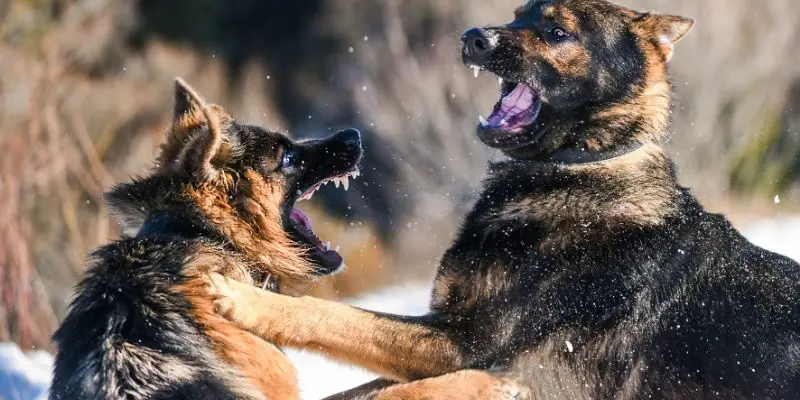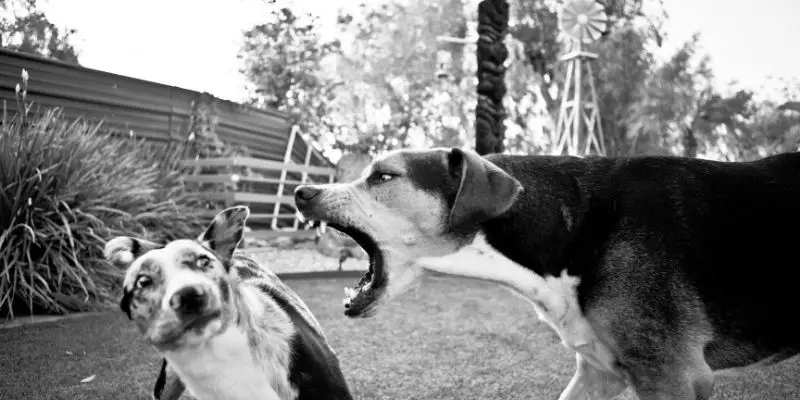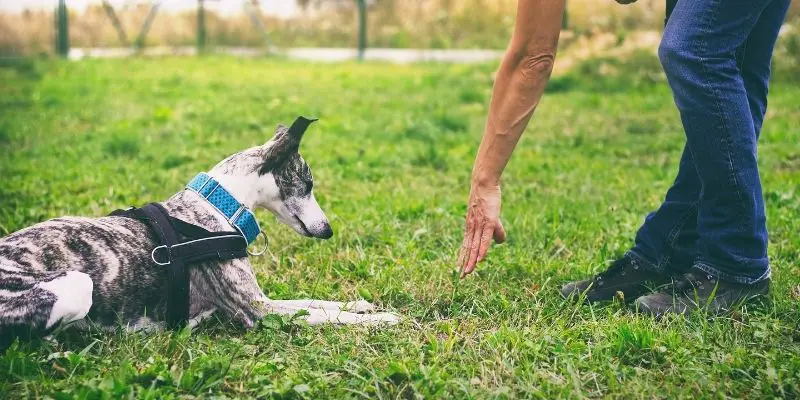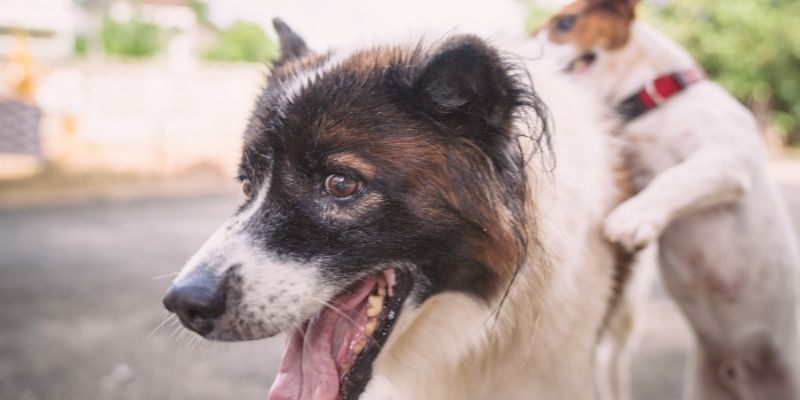Dogs are classified as herd animals whose dominance is rooted in their territorial instincts. In the wild, this behavior acts as a key to survival. Still, it can lead to inappropriate behavior and violence. That’s why it’s important to be conscious of all the signs of dog dominance and watch out for them. So you can quickly fix your pet’s actions and end up with a perfect (or almost perfect) pup.
Dominating behavior can occur in any dog breed, both males and females, although it is more common in males. In most cases, it happens after a dog has achieved puberty, between one and three years of age. However, it is not rare for older dogs or puppies. But let’s just get into the specifics.
Do you have a specific question about spotting the signs of dominance in dogs? Then use the table of contents below to jump to the most relevant section. And you can always go back by clicking on the black arrow in the right bottom corner of the page. Also, please note that some of the links in this article may be affiliate links. For more details, check the Disclosure section at the bottom of the page.
Here's what we'll cover:
Causes of dominance in dogs
Even though the drive for dominance probably has an inherited component, some other reasons might cause it too. For instance, lack of socialization with other animals and proper training and various environmental factors, including separation anxiety and stress.

Dominant dog behavior

It’s quick to spot the leader and the omega because they’re going to let you know. The leader will teach him the language of his body and the relationships with other dogs. This is the dog that other dogs are approaching in the park, not the other way around.
Among the indicators of alpha-dog actions, there might be an intention to push first in or out of the doorways, claim the best sleeping spot, or nudging other dogs out of the doorways. You should also look for certain other dominant dog characteristics. E.g., not paying much attention to the other dogs, pretending to be territorial when you pay attention to the other dogs, and mounting them.

Dominant puppy signs
Young and old dogs can display signs of classical dominance. Some puppies begin to exhibit dominant behavioral habits with their owners when they are just 6 months old. Here are some signs of dominant puppy activity that you might be looking for:
- Defiance of commands
- Barking
- Abnormal self-protective habits
- Fixed staring
- Being more aggressive when asking for food
- Pushing and taking up the personal space

Dominance aggression in dogs

Although aggression is just one of the signs of dog dominance, it is undoubtedly one of the most dangerous. Some of the members of your family could get injured, after all.
This can take the form of disobedience and the defense of resources. Still, it may also include nipping and biting behaviors. Dominance violence can be especially harmful to children if it is not controlled as the bites appear to be concentrated around the head and neck.

How to tell if your dog is dominant or submissive?
While the person in charge is not always clear-cut, there is a particular body language that can signify superiority or submission. A dominant dog is trying to make himself look as big as possible by standing tall, maybe even standing on his toes. Hackles may be lifted. He could stare. If it is wagging, it is most definitely in a stiff, moderate arc like a flag-waving.
In sharp contrast, the submissive dog tries to make itself look as tiny as possible. The body will be lowered to the ground. Yeah, the ears are back. Eyes are being averted. The tail is kept low and probably even hidden away. In the severe show of obedience, the dog can lie on his back, revealing his underbelly.


How to stop dog dominance behavior?
The best way of asserting dominance over a dog in most cases is training help from a professional. Still, there are some tips you have to remember when breaking a dominant pup.
Be fair in your corrections
Show your dog that they can trust your commands. And don’t correct the dog after the incident has happened. Such corrections seem unreasonable and cruel to the dog since there is no associative memory of how humans do it. And always use the minimum required correction. Otherwise, you are going to confuse your fluffy student.
Be consistent

This one is easy. The most consistent you are, the more efficient would be your training efforts. Consistency can be a big challenge for a family. Every family member must agree with the dog on the basic ground rules: when and for what the dog should be corrected, what directions to use, and so on. Families must cooperate thoroughly to avoid confusing their pets. It’s better if only one person actively trains the dog; even if the commands are given the same way, everyone in the family will use them.
Learn how to display alpha behavior
There are a variety of ways to show superiority, for example, by using eye contact. Alphas appear to “start” the subordinates. Or you can tap under the chin. Though alpha dogs nip subordinates under the chin as corrections, you can use this by tapping (never hitting) your dog with one or two fingers under the chin. You can even try to catch a pup under your ears. Alpha dogs will chomp under the ears of subordinate dogs and shake. You can imitate this by gripping the skin under your dog’s ears tightly and shaking. Don’t overdo it, though – you may be hurting your dog.
Thanks for the blog graphics: Canva.com


